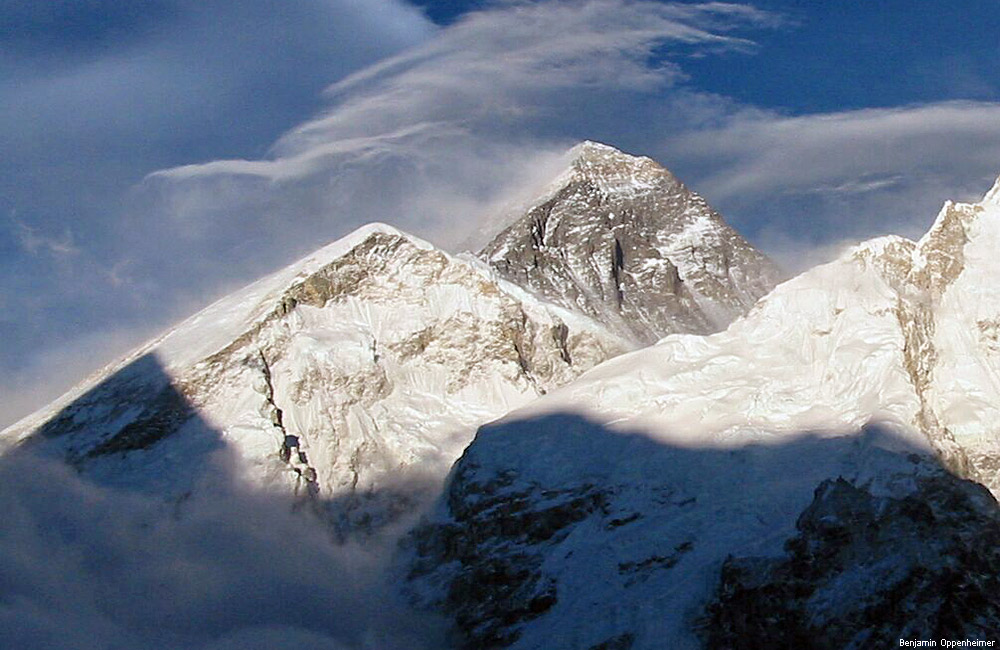The USGS Water Science School
Here is Mt. Everest on the Nepal-Tibet border. It is the tallest mountain on Earth, reaching over 29,000 feet (8,840 meters) in height. What parts of the water cycle are at work here, at a place where you certainly won't find any liquid water?
Mt. Everst is downright cold all of the time - at over 29,000 feet, temperatures at the peak are never above freezing, so it never rains there. But it sure gets some snow. We all know that snow melts, but if it never rises above freezing, how does snow not build up forever on Mt. Everest?
As this picture shows, winds, often at hurricane force, blow tons of snow off the peak. But a part of the water cycle called "sublimation" is also at work. Just as evaporation turns liquid water into water vapor gas, sublimation turns frozen water directly into water vapor gas, skipping the melting phase into a liquid.
Also, as with evaporation, the sun's heat causes sublimation to work, and on top of Mt. Everest on a clear day, the sun is very strong and provides energy for sublimation, even though it is below freezing. Sublimation doesn't just occur on moutain peaks. If there is snow and ice buildup in your neighborhood then on a sunny and dry day sublimation is happing there, too.

Credit: Benjamin D. Oppenheimer